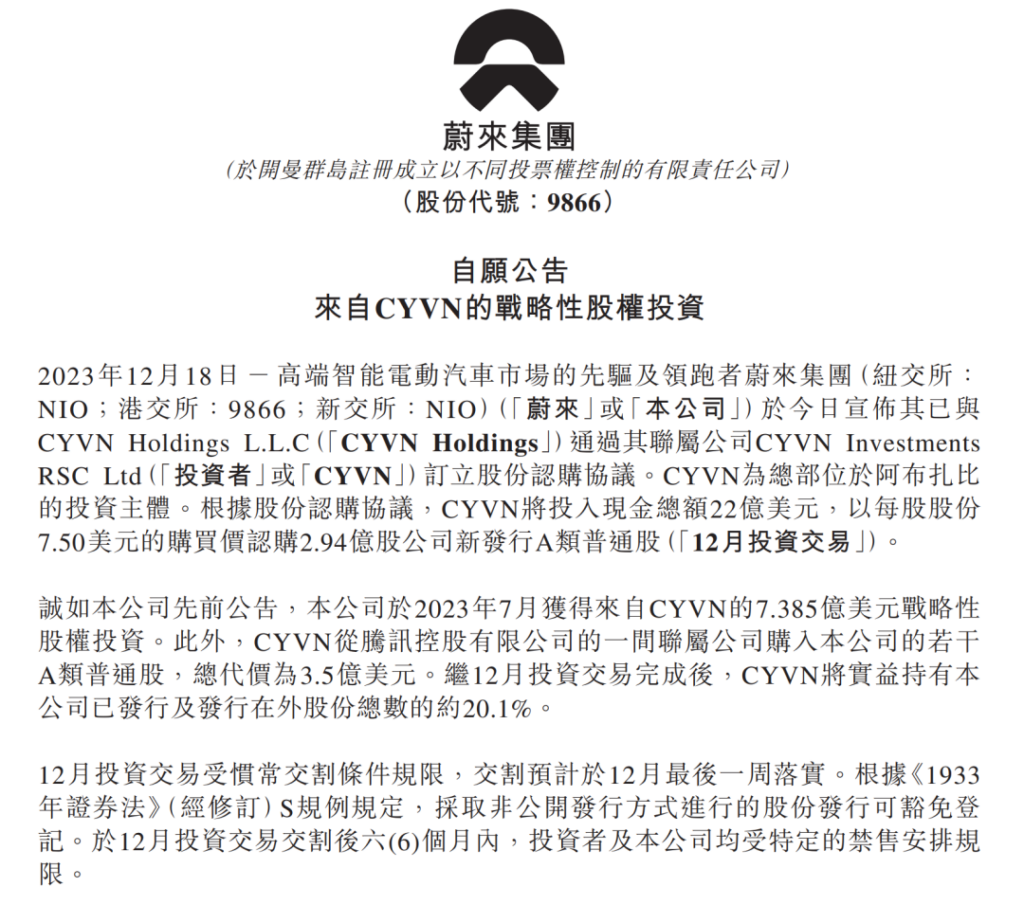
12-21 #Freezing : Huawei’s new nova will allegedly feature a new Kirin 5G chipset; Samsung has unveiled two new ISOCELL Vizion sensors; LG will unveil its transparent antenna for automobiles; etc.

Huawei has released a new 5nm chip, the Kirin 9006C SoC. Earlier 2023, Huawei achieved a breakthrough with their 7nm ARM processor, the Kirin 9000S. The processor was manufactured by Semiconductor Manufacturing International Corporation (SMIC) and powers the Huawei Mate 60. The new processor boasts eight ARM CPU cores (four A77 and four A55) with a maximum clock speed of 3.13GHz. Currently, the Kirin 9006C can only be found in Huawei’s Qingyun L540 laptop. (Gizmo China, Asia Times, Tom’s Hardware, 163.com)

Huawei Nova 12 Ultra will allegedly feature a new Kirin 5G chipset. It may be a downclocked version of the Kirin 9000S 5G chipset. It will bear the same 1+3+4 CPU architecture. On the other hand, it still uses the self-developed GPU – Maleoon 910. Currently, there is no word if the Kirin ‘K9’ will utilize this 5nm process or stick with the same 7nm used to fabricate the Kirin 9000S.(Android Headlines, WCCFTech, Huawei Central, My Drivers)

According to Haitong International Securities analyst Jeff Pu, Apple’s iPhone 17 Pro models in 2025 will be equipped with an Apple-designed Wi-Fi 7 chip. It could be a long-term threat to Broadcom, which currently supplies Apple with a combined Wi-Fi and Bluetooth chip for iPhones. Pu believes Apple will expand its in-house Wi-Fi chip to the entire iPhone 18 series in 2026. (MacRumors, Android Headlines)
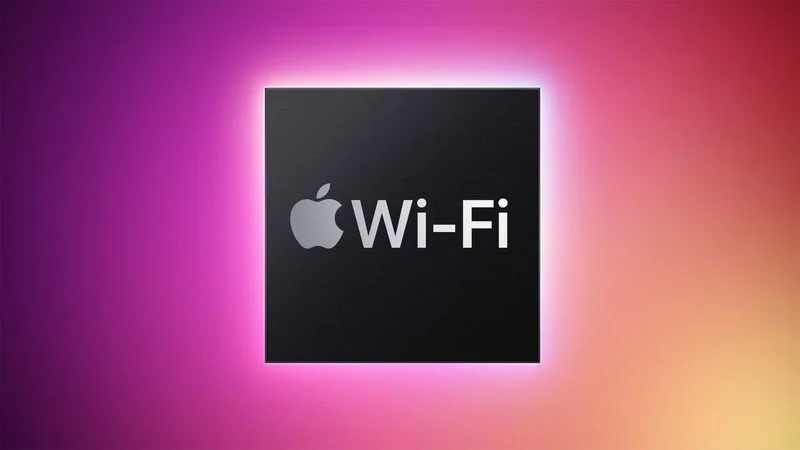
Wireless connectivity chip maker Qorvo has reached a definitive agreement to sell its assembly and test facilities in Beijing and Dezhou in China to contract manufacturer Luxshare Precision Industry. The transaction, the financial terms of which were not disclosed, is expected to close by 1H24. Upon closing, Luxshare will acquire each facility’s operations and assets, which include the property, plant and equipment, and the existing workforce, while Qorvo will continue to maintain its sales, engineering and customer support employees in China. (CN Beta, Qorvo, Reuters, Business Times)
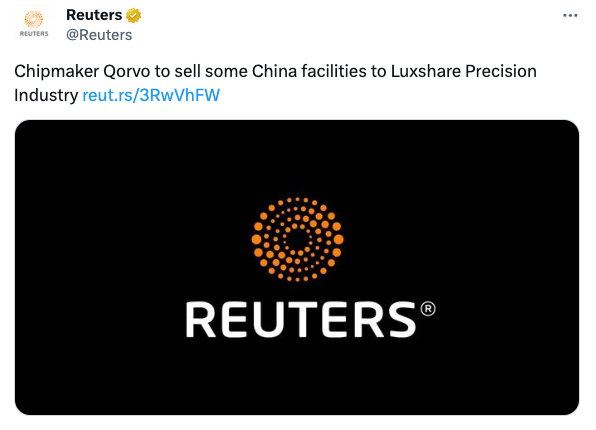

Apple’s iPhone 16 Pro, to be released in 2H24, reportedly will feature a 48Mp ultrawide angle camera. The iPhone 15 Pro in 2023 has mixed a 48Mp main camera sensor alongside a pair of 12Mp sensors for the ultra-wide and telephoto versions. (Apple Insider, Weibo)

Samsung Electronics has unveiled two new ISOCELL Vizion sensors – the ISOCELL Vizion 63D, a time-of-flight (ToF) sensor, and the ISOCELL Vizion 931, a global shutter sensor. ToF sensors measure distance and depth by calculating the time it takes the emitted light to travel to and from an object, similar to how bats use echolocation to navigate in the dark. The ISOCELL Vizion 63Dis ideal for service and industrial robots, XR devices and facial authentication where high-resolution and precise depth measuring are crucial, while the ISOCELL Vizion 931 is well-suited for motion-tracking in XR devices, gaming systems, service and logistics robots as well as drones. (CN Beta, Samsung, KED Global)
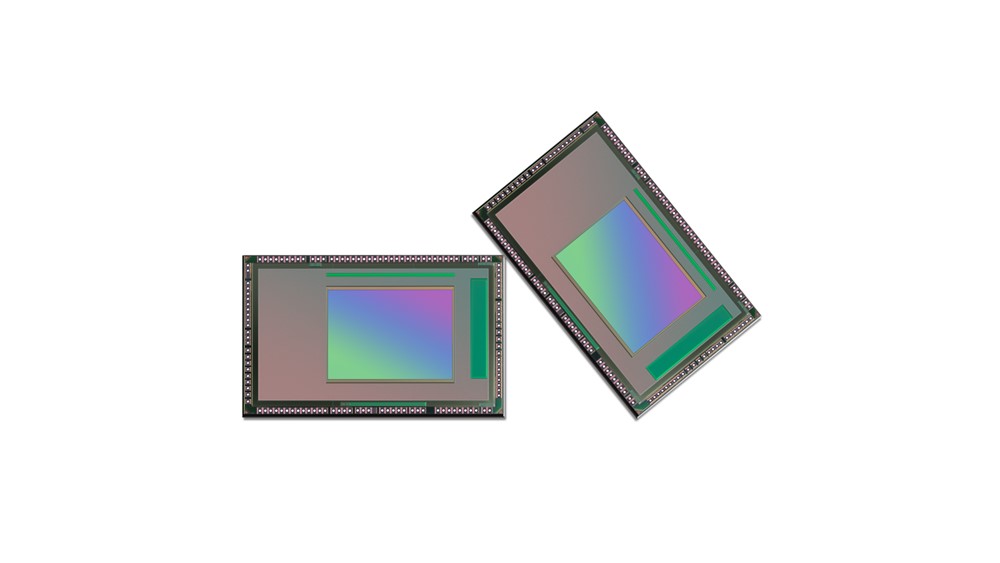
Samsung is reportedly upgrading the periscope zoom camera on the Galaxy S24 Ultra in 2024. The 2024 model will feature a 50Mp sensor with 0.7µm pixels. The current Ultra has a 10Mp periscope zoom camera featuring 1.12µm pixels. The Galaxy S25 Ultra’s zoom camera will reportedly boast variable focal length. This means optical zoom at all magnification levels in the supported range. The Galaxy S23 Ultra, for example, has 3x and 10x zoom cameras of fixed focal length. The phone relies on in-sensor zoom at 4x, 5x, and other magnification levels. With variable focal length, users get continuous optical zoom at all levels. The 2025 Ultra model is also said to get an improved 200Mp main camera and a new ultrawide lens—12Mp to 50Mp. The Galaxy S26 Ultra will get a new main camera—a larger 200Mp sensor with 0.7µm pixels and a 1/1.10” size. The current sensor is 1/1.3” with 0.6µm pixels. (Android Headlines, GSM Arena, Twitter, Android Authority)
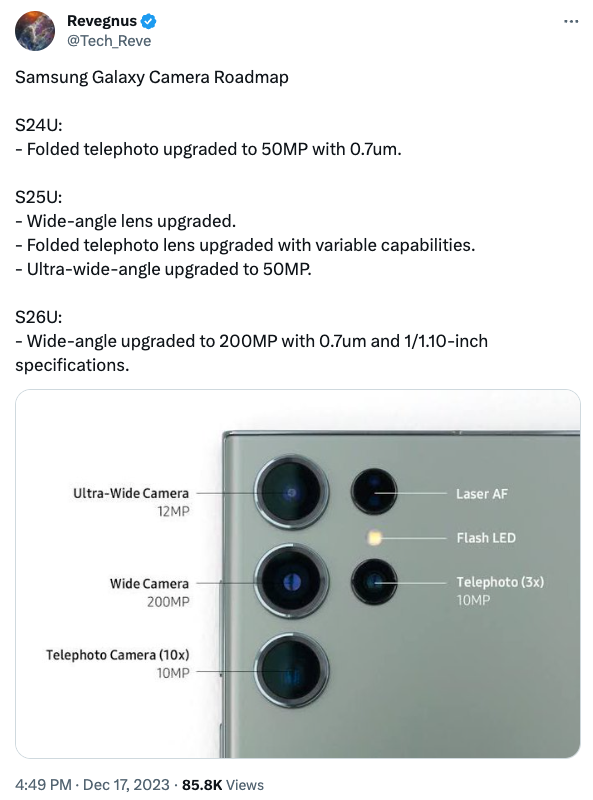
Samsung Galaxy S24 Ultra features an improved Night Mode, which should improve the overall image quality. The Galaxy S24 Ultra is expected to feature a slightly improved 200Mp camera sensor. It is also said to feature a 12Mp ultrawide camera, a 10MP telephoto camera with 3x optical zoom, and a 50Mp telephoto camera with 5x optical zoom. The phone uses AI to identify 12 different kinds of subjects/objects and optimize them for better image quality in 200Mp resolution. Samsung has also unveiled Zoom AnyPlace technology, which uses 200Mp camera sensors to zoom up to 4x in any scene without an image quality downgrade.(Andrroid Headlines, Twitter, SamMobile)
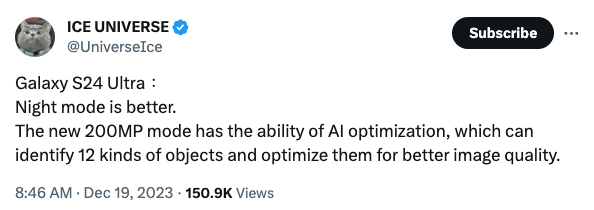

Microsoft has made a significant breakthrough in storage technology with its latest innovation – quartz glass storage. The technology is poised to replace traditional storage systems in the best hard drives and SSDs available today. Dubbed Project Silica, the storage units, made from quartz glass, are designed for long-lasting and highly efficient use in the cloud. The storage process involves using ultrafast femtosecond lasers to write data onto a square glass platter. Multiple bits of data are written in layers across the surface, with hundreds of layers stacked vertically. To read the data, polarization microscopy technology is used to image the platter, and a specialized drive scans sectors in a Z-pattern. The scanned images are processed and decoded using machine learning algorithms to convert analog signals into digital data.(CN Beta, Microsoft, Gear Rice, ISP.page)
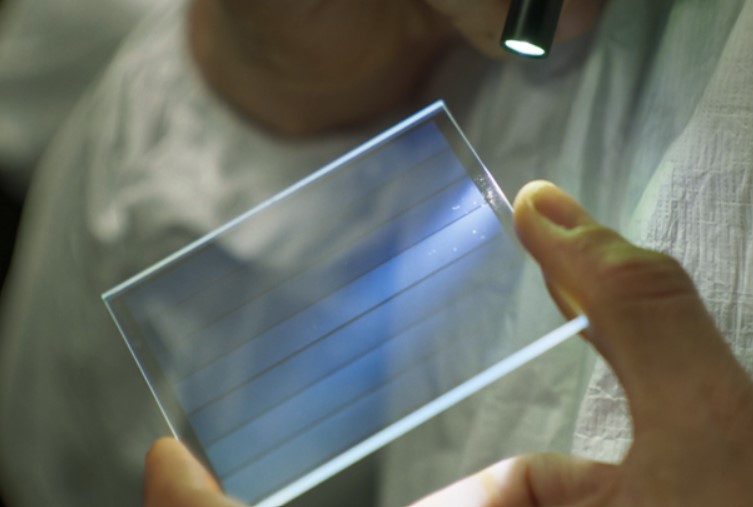
Kioxia has announced the industry’s first 2 terabyte (TB) microSDXC memory card working prototypes. Using its innovative BiCS FLASH 3D flash memory and an in-house designed controller, basic functions of the KIOXIA 2TB microSDXC UHS-I memory card working prototypes were confirmed in the microSDXC standard’s maximum density. Designed using the company’s proprietary manufacturing technology, the KIOXIA 2TB card working prototypes are built by stacking sixteen 1 terabit dies of 3D flash memory and achieve a maximum thickness of 0.8 mm at the die mounting area – making them well-suited to high-capacity data recording applications.(CN Beta, Kioxia, Neowin)
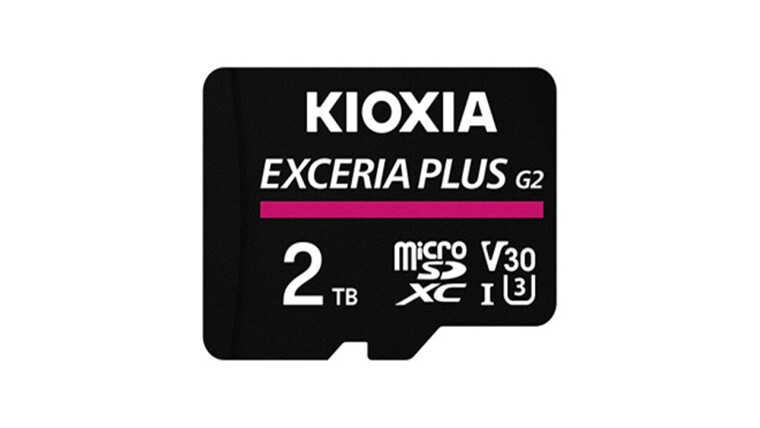

Volkswagen Group, which also owns Audi, Porsche, and Scout Motors, has announced to adopt Tesla’s electric vehicle charging standard, North American Charging Standard (NACS). VW said it is “exploring adapter solutions” so that its current EV owners can access Tesla’s Supercharger network and expects to have something to roll out by 2025. Tesla’s Supercharger network is widely recognized as superior to many of the third-party EV charging stations, most of which feature CCS plugs and the less utilized CHAdeMO charging standard. The company says it has 45,000 Superchargers worldwide, 12,000 of which are located in the US.(CN Beta, The Verge, Inside EVs, Electrek)
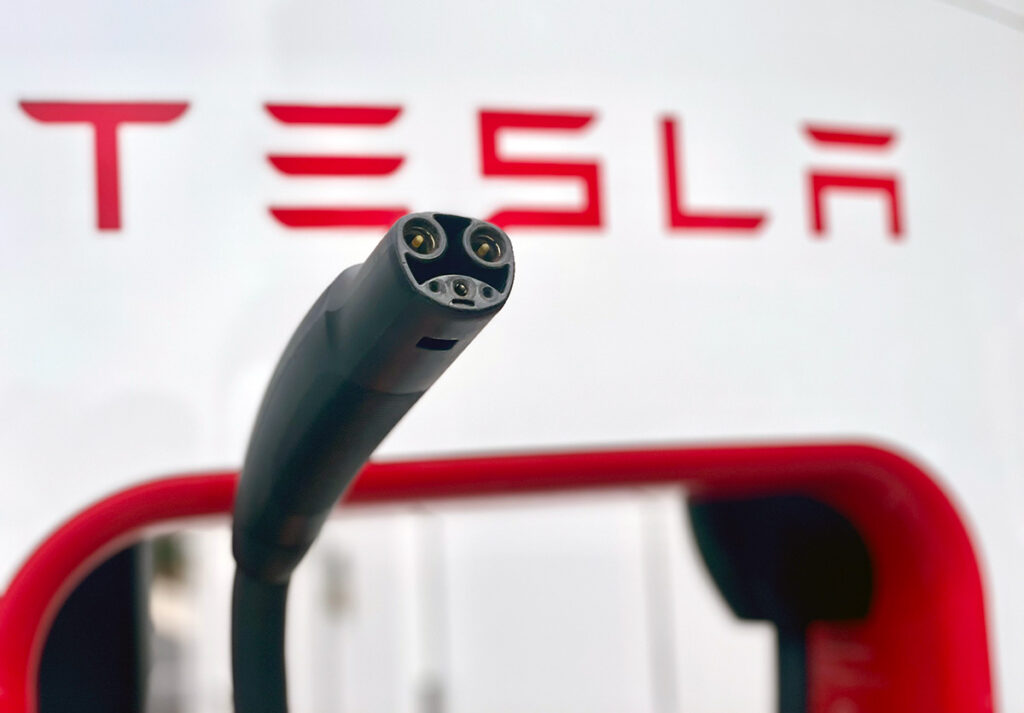

LG Electronics (LG) will unveil its transparent antenna for automobiles. LG’s transparent film-type antenna, which is applied directly to vehicle glass, was designed in collaboration with renowned French glass manufacturer, Saint-Gobain Sekurit. Designed for compatibility with various types of glass and vehicle designs, LG’s transparent antenna will be available as an on-glass or in-glass solution. The broad surface application of the film-type antenna guarantees reliable telecommunications performance and provides scalability to handle increased network traffic. Extremely adaptable, LG’s latest telematics innovation offers improved connectivity with support for 5G, GNSS (Global Navigation Satellite System) and Wi-Fi. The transparent antenna can be seamlessly integrated in car windshields or glass sunroofs.(CN Beta, LG, KED Global)
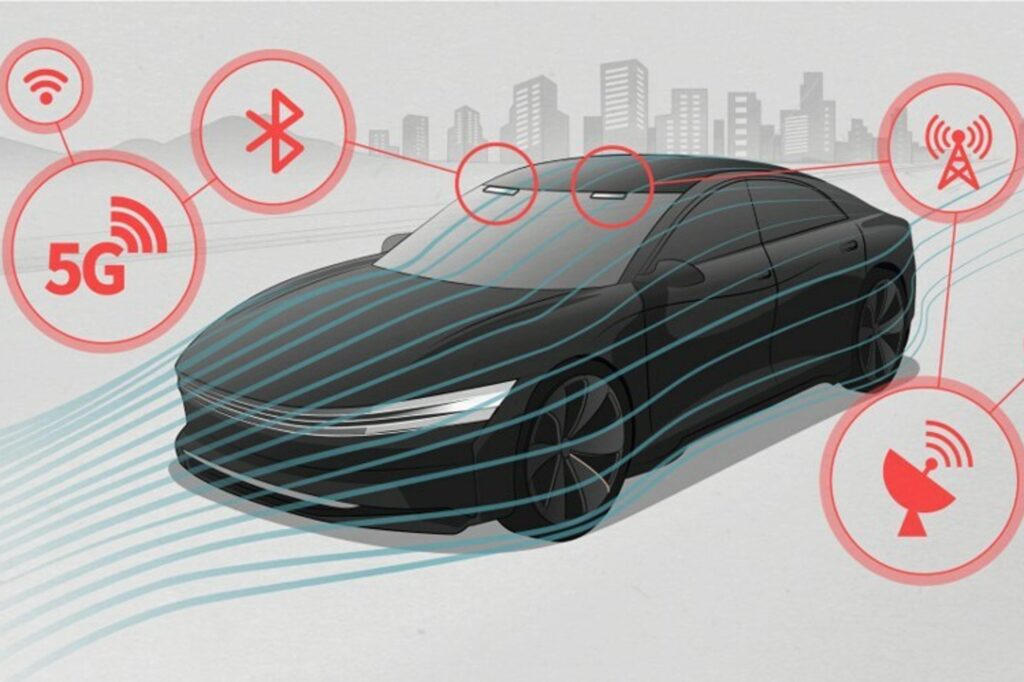

Xiaomi revealed its HyperOS in Oct 2023, and it is effectively an evolution of the firm’s MIUI 14 Android overlay. Xiaomi has confirmed that HyperOS would be coming to a selection of Xiaomi and Redmi devices in 1Q24. POCO F5 would be the first POCO handset to get HyperOS.(Android Authority, Twitter, Twitter)
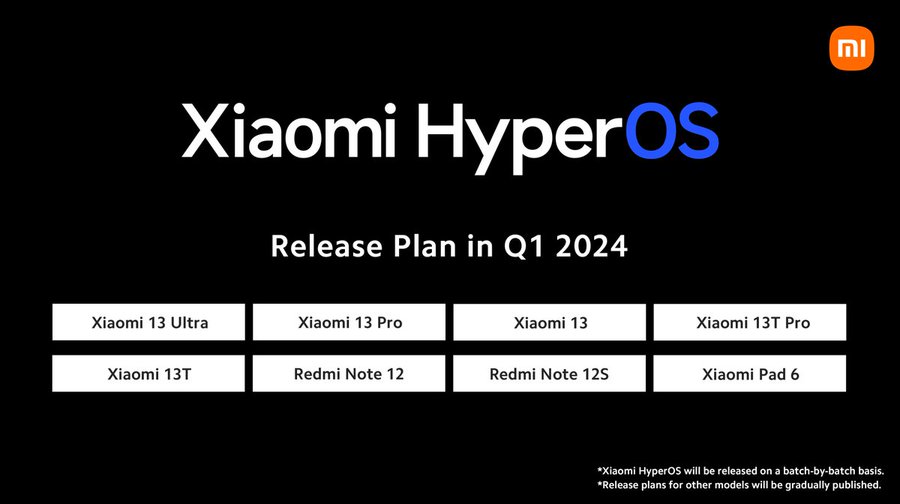
Samsung has announced that its Self-Repair program is now available for the latest smartphones, tablets and PCs in South Korea and even more European countries. For the first time, Samsung is expanding the program to Galaxy foldables, including the Galaxy Z Flip5 and Z Fold5. This offers Galaxy users extra convenience and choice to get more out of their devices by extending the life of their products. Samsung first launched its Self-Repair program in the U.S. in 2022 and expanded to South Korea, Brazil, Mexico and select European countries earlier 2023. (CN Beta, Android Authority, Samsung)
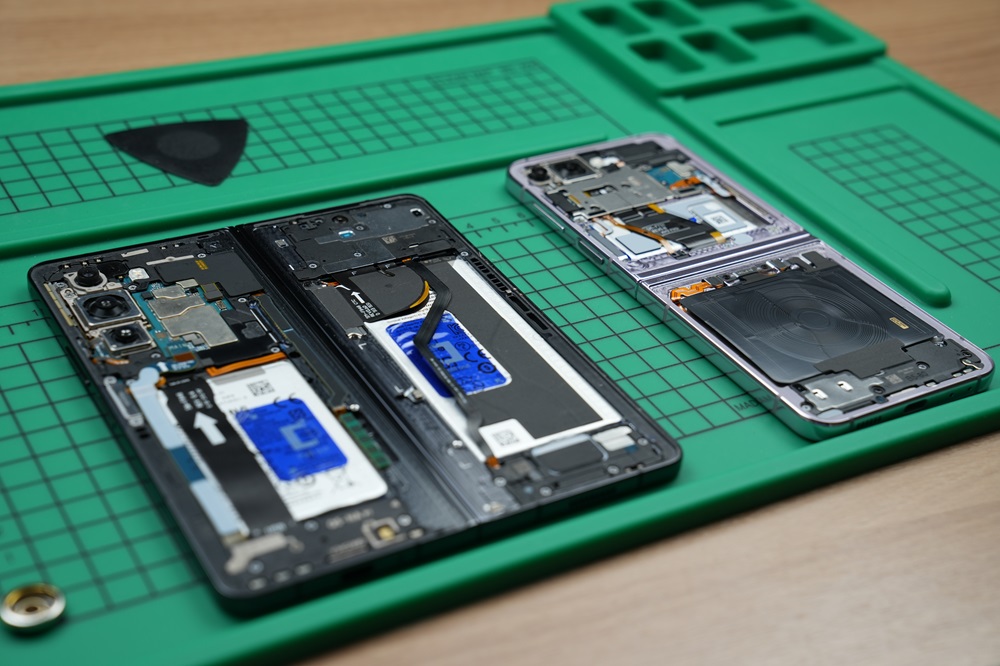
Google has agreed to pay USD700M and allow more competition in its Play app store, according to the terms of an antitrust settlement with US states and consumers filed in federal court. Roughly 102M US consumers will be eligible to receive a total of USD630M in compensation as part of the settlement, which resolves long-running allegations that Google harmed competition through its app store terms and fees. The other USD70M will be paid to the dozens of states that participated in the suit. The vast majority of affected consumers, about 71.4M, will not need to file a claim in order to benefit from the agreement, according to the settlement terms. (Apple Insider, CNN, Court Listener)
The Google Android Developer Blog officially issued a post reminding developers that they should remove certain unnecessary functional requirements to improve the usability of apps on different types of devices. This is crucial for Google and Android. After all, laptops, car systems or non-touch screen IoT devices cannot be without applications, but for developers this is actually dispensable. After all, the number of users of such devices It’s indeed too low. Google said that many Apps have unnecessary restrictions on some hardware requirements. For example, the device must support touch screen, support Bluetooth, support camera, etc. before it can be used. However, some devices, such as non-touch screen IoT devices, use mouse and keyboard control, and also there is no Bluetooth or camera, but users can use it normally using a mouse and keyboard. However, these restrictions set by App developers may prevent users from using it normally.(CN Beta, Android)


Apple Watch is going to be the company’s big focus in 2024. There will be at least one Apple Watch model in 2024 with a new look. Further, two of the big health additions are expected to be hypertension detection and sleep apnea detection. The smartwatch will detect onset symptoms and advise its users to go for follow-up testing for these conditions. It remains to be seen how Apple finally implements and integrates these features into the Apple Watch. (GizChina, Bloomberg, Android Authority)
Apple has confirmed it will suspend selling its recently launched Apple Watch Series 9 and Apple Watch Ultra 2 smartwatches. The move is due to a patent dispute over the blood oxygen sensor used in both models. The International Trade Commission (ITC) has decided that Apple had violated the patents of a company called Masimo, which also had developed blood oxygen sensor technology. The ITC ruling meant that the Biden administration started conducting a Presidential Review of this dispute that is scheduled to last 60 days. That means the review period is supposed to end on 25 Dec 2023. Apple engineers are “racing to make changes to algorithms on the device that measure a user’s blood oxygen level”. Apple’s hope is that it can change how the Apple Watch “determines oxygen saturation and presents the data to customers”.(CN Beta, Neowin, Apple Insider, 9to5Mac, 9to5Mac)
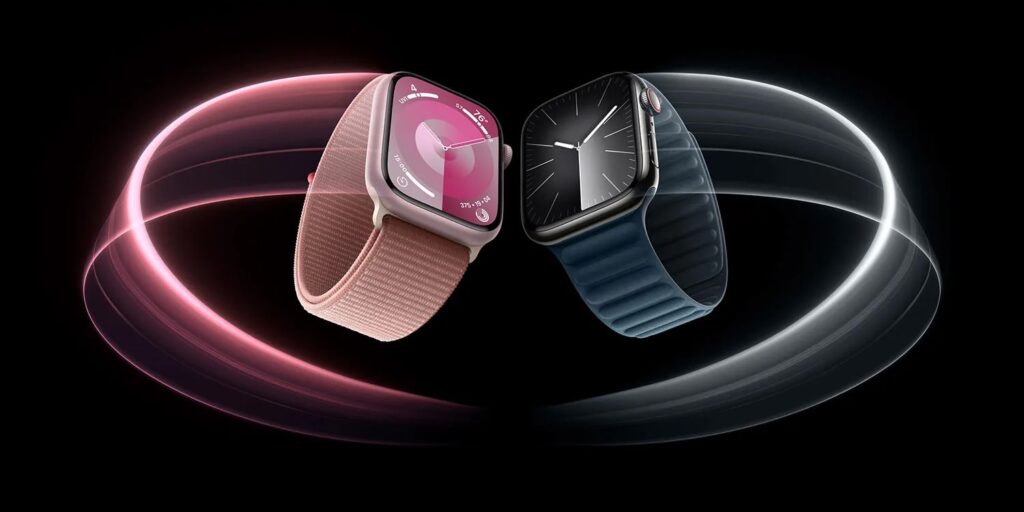
Elista is an Indian consumer electronics brand known for its affordable lineup of smart TVs. The company has a good presence in tier 2 and tier 3 cities of the country. Apart from televisions, it also sells speakers and other products. The brand expands its portfolio by entering the smartwatch category. It has announced three smartwatches.(Gizmo China, India TV, FoneArena, The Statesman)
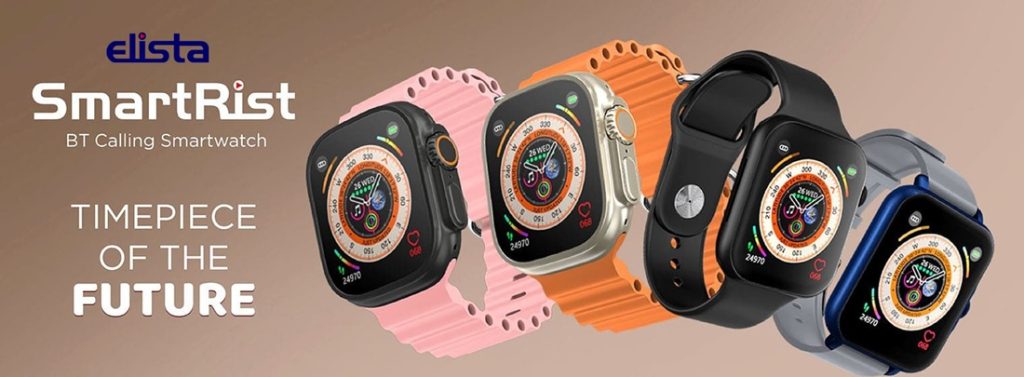
Samsung has announced a new Medications tracking feature that will be added to the Samsung Health app to help users manage their health more comprehensively. The new feature will help users easily keep track of both their prescription and over-the-counter medications and provide important, relevant information and tips about these medications. In particular, it can assist those who take medications regularly and those taking supplements for general well-being.(Engadget, Samsung)


Apple is reportedly ramping up production of the Vision Pro mixed-reality headset, setting the stage for a launch by Feb 2024. Production of the new headset is running at full speed at facilities in China. The company has sent an email to software developers encouraging them to “get ready” for the Vision Pro by testing their apps with the latest tools and sending their software to Apple for feedback. Apple is focused on making a good first impression. That includes sprucing up its retail stores, which will make room for inventory and new fixtures for Vision Pro. (CN Beta, MacRumors, Bloomberg, Yahoo)
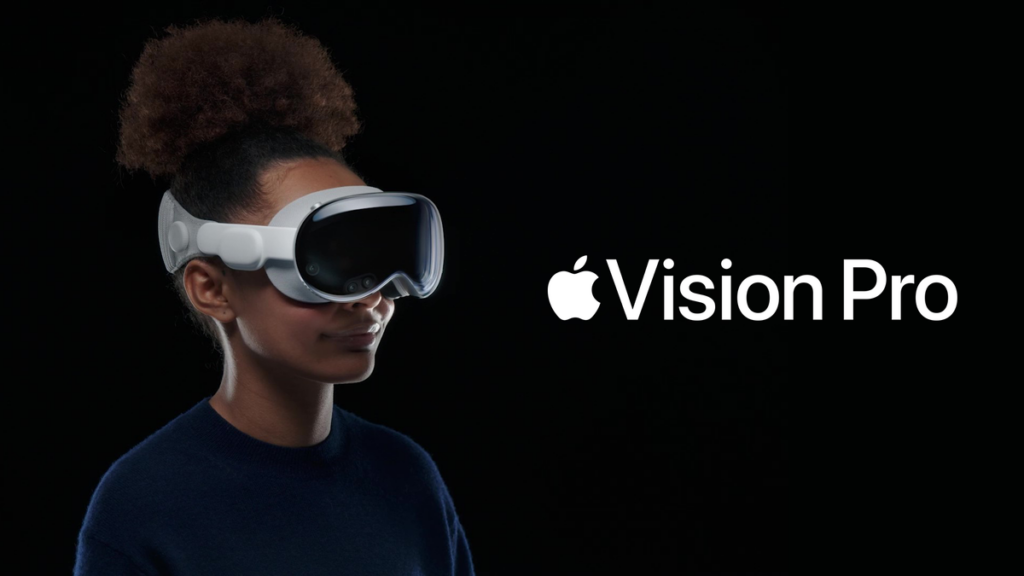

Xiaomi’s founder, Lei Jun has outlined two key principles guiding Xiaomi’s automotive ambitions: leveraging proven technologies from established carmakers and investing heavily in research and development. Lei has revealed that the company has dedicated over 10 times the resources typically invested in a first car model by a conventional automaker. This translates to a team of 3,400 engineers and an R&D budget exceeding CNY10B (approximately USD1.4B). He has expressed concern about potential production bottlenecks and long wait times, which could damage Xiaomi’s reputation if not managed effectively. (Gizmo China, Pandaily, STCN, IT Home)
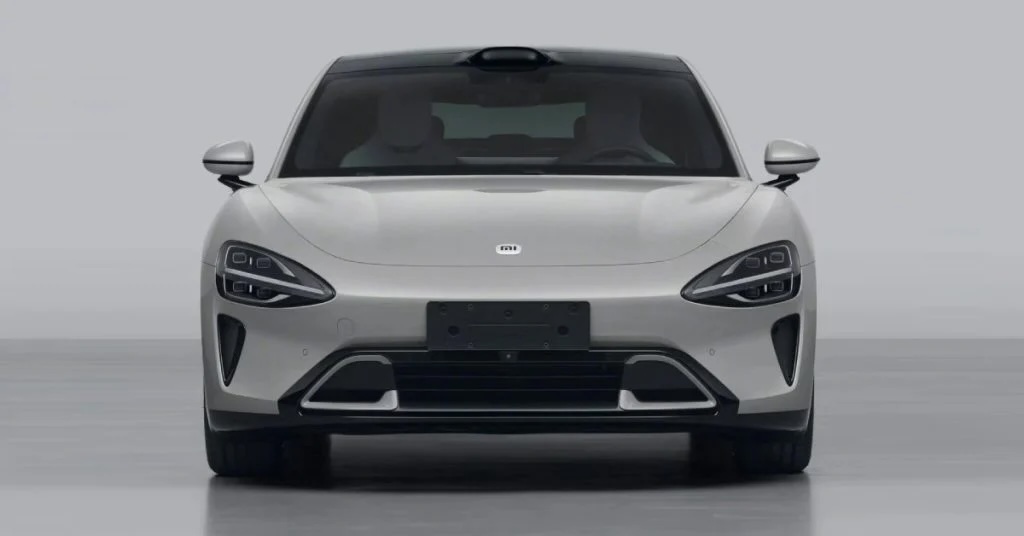
TomTom, the location technology specialist, has announced that, together with Microsoft, it is bringing the benefits of generative artificial intelligence (AI) to the global automotive industry. The joint-developed AI voice assistant for vehicles enables voice interaction with location search, infotainment, and vehicle command systems. The AI assistant uses multiple Microsoft products, including its Azure OpenAI Service, Azure Kubernetes Services, Azure Cosmos DB, and Azure Cognitive Services. It is already built into TomTom’s Digital Cockpit, the company’s own in-vehicle infotainment platform, but can also be integrated into other automotive infotainment systems. (Engadget, Reuters, Globe Newswire, TomTom, TNW)
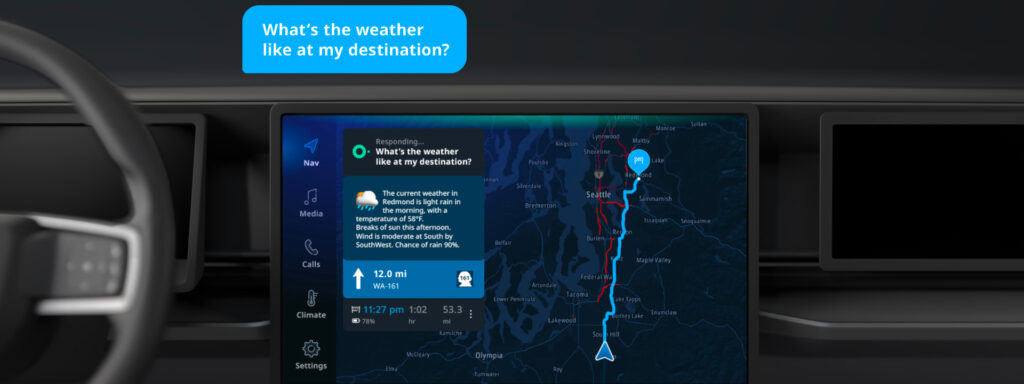
Volkswagen has been trying to fix its interiors for a few years now. Under former CEO Herbert Diess, the German automaker decided to follow in Tesla’s footsteps and centralize a vast majority of its controls to the infotainment screen. It also removed the physical buttons from its steering wheels and replaced them with touch-sensitive capacitive buttons instead. This move, according to VW, “frustrated customers who should not be frustrated”. Volkswagen has since reverted its since on the steering wheel buttons and is looking to now claw back its reputation for something that its current CEO, Thomas Schäfer, says “did a lot of damage” to the brand. That change all starts with the Volkswagen ID 2. (Engadget, Inside EVs, ExtremeTech, Techspot, AutoCar)
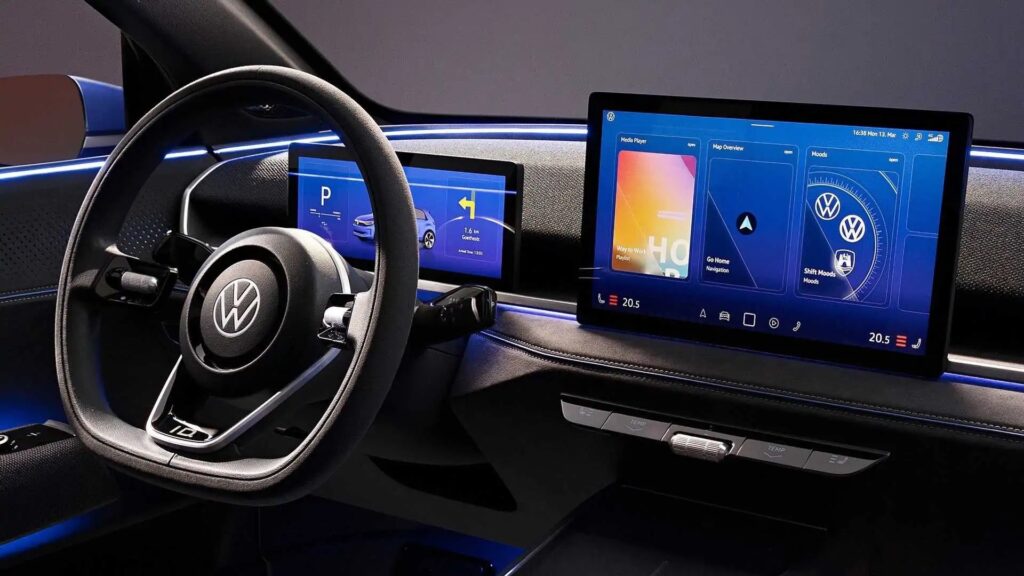
CYVN Holdings, an investment fund controlled by the Abu Dhabi government, has invested USD2.2B in Nio, making it the first Middle East investor to take a substantial stake in a Chinese electric-car maker. CYVN Holdings is a specialist investment vehicle based in Abu Dhabi, that deploys capital in advanced mobility solutions. Nio has yet to make a profit since it was established in 2014, but the carmaker, along with Xpeng and Li Auto – the three Chinese premium EV assemblers – have new rivals on the block, including smartphone vendor Xiaomi and search-engine giant Baidu. (Gizmo China, SCMP, 36kr, Wallstreet CN)
